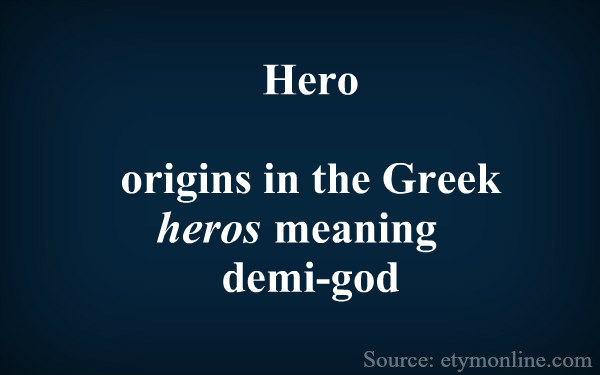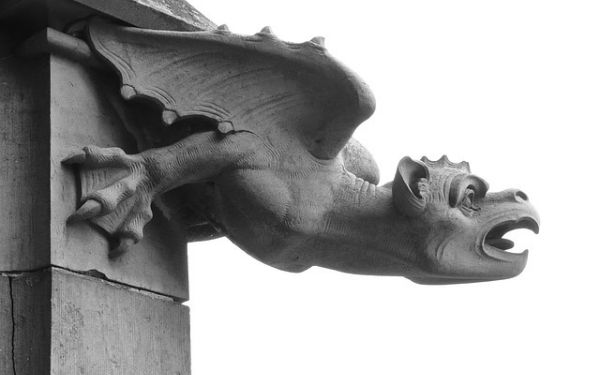Hitchens quote: The essence of the independent mind…
[via procon.org]
[via procon.org]


[via goodreads]


[via brainyquote]

I don’t know anything about architecture. I don’t know the terms, styles, or theory. But I do appreciate artistry when I see it.
One thing I appreciate is the detail and another is creativity. This is where gargoyles come in. They are amazing, aren’t they?
Staring down at you from up on high. Whether serious or whimsical, they carry a lot of impact for their size. They exhibit a certain je ne sais quoi. It is as if they bear a sentiment from a long time ago. Or they embody great wisdom and many secrets from their years of reconnaissance and voyeurism. Whatever it is, it is fascinating.
That is the inspiration behind this article. I wanted to learn about gargoyles and present my version of the gargoyle Hall of Fame.
The term gargoyle has come to be a catchall term for different types of architectural sculpture. What is commonly referred to as a gargoyle may actually be a grotesque or guardian. To clarify, I begin with a little terminology:
Gargoyle
Decorative waterspouts portraying humans, animals, or a mythical combination (see chimera). They are essentially gutter spouts. Their purpose is to divert the water away from the walls and foundation of a building.
Grotesque
Decorative sculpture on a building. They are not a functional part of the drainage system. They can be on ledges and corners on the outside of buildings, but also on entrance keystones and other internal parts of the building. See below an example from the Cathedral Church of St. Mary, Lincoln, England.
Guardian
Decorative sculpture at the entrance of a building or other important place, such as a tomb or garden. See an example below of a lion sculpture at the Monument to the Unknown Soldier in Sofia, Bulgaria
Chimera
A mythical creature that is a hybrid of multiple animals and/or a human. The sphinx is a chimera of a lions body with the head of a human. A mermaid is another example. See an example of a guardian depicting a chimera below.
Of course, gargoyles go by different names in different languages which give clues to their function.
In Italian, grónda sporgente means protruding gutter. In the middle ages the term babewyns referred to gargoyles as well as grotesques.
In German, wasserspeier means water spitter.
In Dutch, waterspuwer means water spitter.
In Spanish, gárgola means gullet or throat.
In French, gargouille from the verb gargouiller means gurgle or rumble.
It is common to associate gargoyles, grotesques, and guardians with great churches and palaces of medieval Europe.
In fact, they have all been used worldwide. The ancient Egyptians, Sumerians, Babylonians, Greek, Roman, and pre-modern China all have used these sculptural works.
Gargoyles are still being created today. They may be brand new designs or intended to replace badly deteriorated ones. Hopefully, this practice continues and the craft doesn’t die.
There are different theories surrounding the elaborate nature of gargoyles. Gutters would have worked just as well without an embellished design. Also, grotesques and guardians served no water drainage purpose. So why make the gutters so ornamental? Various theories are:
(See Related: Why you need to experience the Buckingham Fountain)
Water drainage is important because of the damaging effects on buildings. Unfortunately, all the elements take their toll on the gargoyles as well. Rain, ice, wind, pollution, bird droppings in addition to the running water all can wear down the sculpture to nothing.
You will note that many gargoyles will have pipes inserted to reduce erosion. Sadly, they are usually quite obvious and change the aesthetic of the sculpture.
Gargoyles, grotesques, and guardians were made using a variety of materials. Often limestone and marble are the medium. Wood, terracotta, and possibly brick have been used in the past, but don’t withstand time and the elements well.
Most sculptures were likely completed or nearly completed on the ground and then hoisted into place with a pulley system. The carving was only a small piece of a larger block that was part of the building. They can be quite heavy weighing up to half a ton or more.
There are wonderful gargoyles, grotesques, and guardians all over the world. And they are all unique. Furthermore, they are often physically far from the viewer. These all add up making it impossible to see them all.
I thought I would help you out and create a Hall of Fame. This will shed light on the extraordinary ones that stood out to me. I hope you enjoy it.
Do you recognize this quintessential grotesque? He represents gargoyles in popular culture due to the popularity of The Hunchback of Notre Dame.
Is it just me or does it look like these guys have had enough guard duty? They definitely want off that ledge.
This guy is just calling for your attention with his bright colors and crown.
With his view of the New York City streets, he definitely could lead the way.

Chrysler building, New York City, USA. Credit- Benjamin Dumas CC BY-NC-SA-2.0 via Flickr www.benontherun.com/post/chrysler-building
Rumor or political statement, this gargoyle was supposedly directed at the city council regarding a payment dispute.
Dated to the 1st century BC, this guy looks amazing for his age.
What could represent popular culture better than everyone’s favorite bad guy?
Deterioration due to the elements has only caused this gargoyle to become even more haunting.
The detail and culture wrapped up in these guardians is enough to take your breath away.
Overlooking Paris with the Eiffel Tower and the Seine, this gargoyle is sitting pretty.

Notre Dame, Paris, France. Credit: Moon Cruise Gallery via http://www.mooncruisegallery.com/notre-dame-cathedral-at-night-paris/
What do you think? Do they mesmerize you too? Do you think they add to or take away from the already beautiful architecture of these buildings?
Do you have a favorite? Have you seen any in person that you love? Let me know in the poll or comments.
25 Epic Gargoyles From Around The World from List 25
40 Gargoyles and Grotesques Around the World from Twisted Sifter
Benton, Janetta Rebold. Holy Terrors: Gargoyles on Medieval Buildings. New York: Abbeville, 1997. Print.
Cipa, Shawn. Carving Gargoyles: Grotesques, and Other Creatures of Myth. East Petersburg, PA: Fox Chapel Pub., 2008. Print.
Gargoyles – Glorious Gruesome Grotesques from Kuriositas
Gargoyles ~ Grotesques from Crystal Links
Gravely Gorgeous from Cornell University Library
The Hunchback of Notre-Dame Quotes from Goodreads

[via goodreads]

[via brainyquote]

